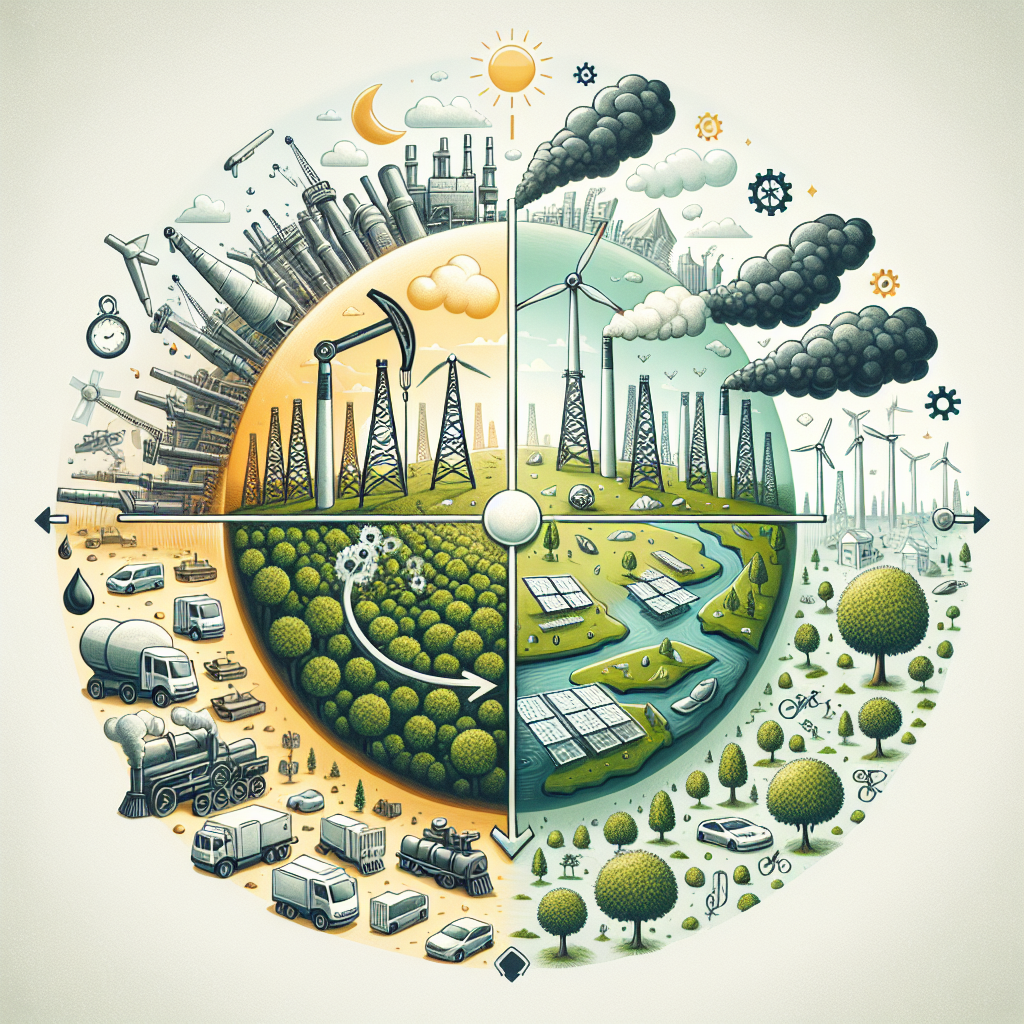As the world faces alarming climate challenges, the energy transition has emerged as a crucial step toward achieving a sustainable future. Countries across the globe are adapting their energy policies, focusing on renewable resources, and innovating to address climate change. In this article, we will explore how different countries are navigating this significant shift and the strategies they are employing to ensure a greener tomorrow.
What is the Energy Transition?
The energy transition refers to the global shift from fossil fuels to renewable energy sources. It encompasses a variety of strategies aimed at reducing carbon emissions, increasing energy efficiency, and promoting sustainability. This transition is essential for combating climate change and ensuring a stable and sustainable future for generations to come.
The Importance of Renewable Energy
Renewable energy sources—such as solar, wind, and hydroelectric power—offer significant benefits. They are cleaner, sustainable, and increasingly cost-effective compared to traditional fossil fuels. Transitioning to these resources not only helps in mitigating environmental impacts but also fosters economic growth by creating jobs in the renewable energy sector.
Global Efforts in Energy Transition
1. European Union Initiatives
The European Union has been at the forefront of the energy transition, setting ambitious targets to reduce greenhouse gas emissions. The EU aims to become climate-neutral by 2050 and has introduced policies such as the European Green Deal to ensure that renewable energy resources constitute at least 32% of the total energy mix by 2030.
2. China’s Renewable Revolution
China is the world’s largest producer of renewable energy, investing heavily in solar and wind power. The government’s commitment to achieving carbon neutrality by 2060 has resulted in numerous projects aimed at transitioning to cleaner energy sources, including significant investments in electric vehicles and energy storage technologies.
3. The United States: A Mixed Bag
In the United States, the energy transition is marked by a mix of federal and state-level initiatives. While some states like California are leading the charge with ambitious renewable energy targets, others continue to rely heavily on fossil fuels. The Biden administration aims to achieve a carbon pollution-free electricity sector by 2035 and aims for net-zero emissions by 2050.
Barriers to Energy Transition
Despite the positive momentum, the energy transition faces several barriers:
- Economic Factors: Transitioning to renewable energy can be expensive, particularly for countries that rely heavily on fossil fuel exports.
- Infrastructure Limitations: Many places lack the necessary infrastructure to support renewable energy technologies.
- Public Awareness: A lack of awareness and public support can hinder implementation.
Innovative Technologies in Renewable Energy
Technological advancements play a pivotal role in the energy transition:
- Energy Storage: Innovations in battery storage technology help store excess energy generated from renewable sources, ensuring a consistent power supply.
- Smart Grids: Smart grid technology improves electricity distribution efficiency, allowing for better management of renewable energy sources.
- Hydrogen Fuel Cells: Hydrogen is being explored as a clean fuel alternative across various sectors, making it a critical component in the energy transition.
Community Involvement and Policies
Community engagement and supportive policies are essential for a successful energy transition. Countries are focusing on increasing public involvement in sustainable practices through educational programs and incentives for adopting renewable energy solutions.
Policies such as feed-in tariffs, renewable energy certificates, and carbon pricing mechanisms are designed to encourage investment in clean energy technologies. These governmental incentives can significantly accelerate the transition by making renewable options more financially viable.
Conclusion
The energy transition is not just a trend; it’s a necessity for ensuring a sustainable and resilient future. Countries around the globe are taking numerous steps toward adopting renewable energy, but challenges remain. A collaborative effort among governments, private sectors, and communities is crucial to overcoming barriers and fostering innovation. With continued commitment and investment, a sustainable future is not only possible but achievable.
FAQs
- 1. What is the energy transition?
- The energy transition is a global shift from fossil fuels to renewable energy sources aimed at reducing carbon emissions and fostering sustainability.
- 2. Why is renewable energy important?
- Renewable energy is essential for combating climate change, reducing pollution, and creating sustainable economic growth.
- 3. What are the main barriers to energy transition?
- Barriers include economic factors, infrastructure limitations, and lack of public awareness.
- 4. What role do technologies play in the energy transition?
- Technological advancements in areas like energy storage and smart grids are vital for improving the efficiency and effectiveness of renewable energy implementation.
- 5. How can communities get involved in the energy transition?
- Communities can engage through education, advocacy, and by adopting renewable energy solutions supported by government policies and incentives.
